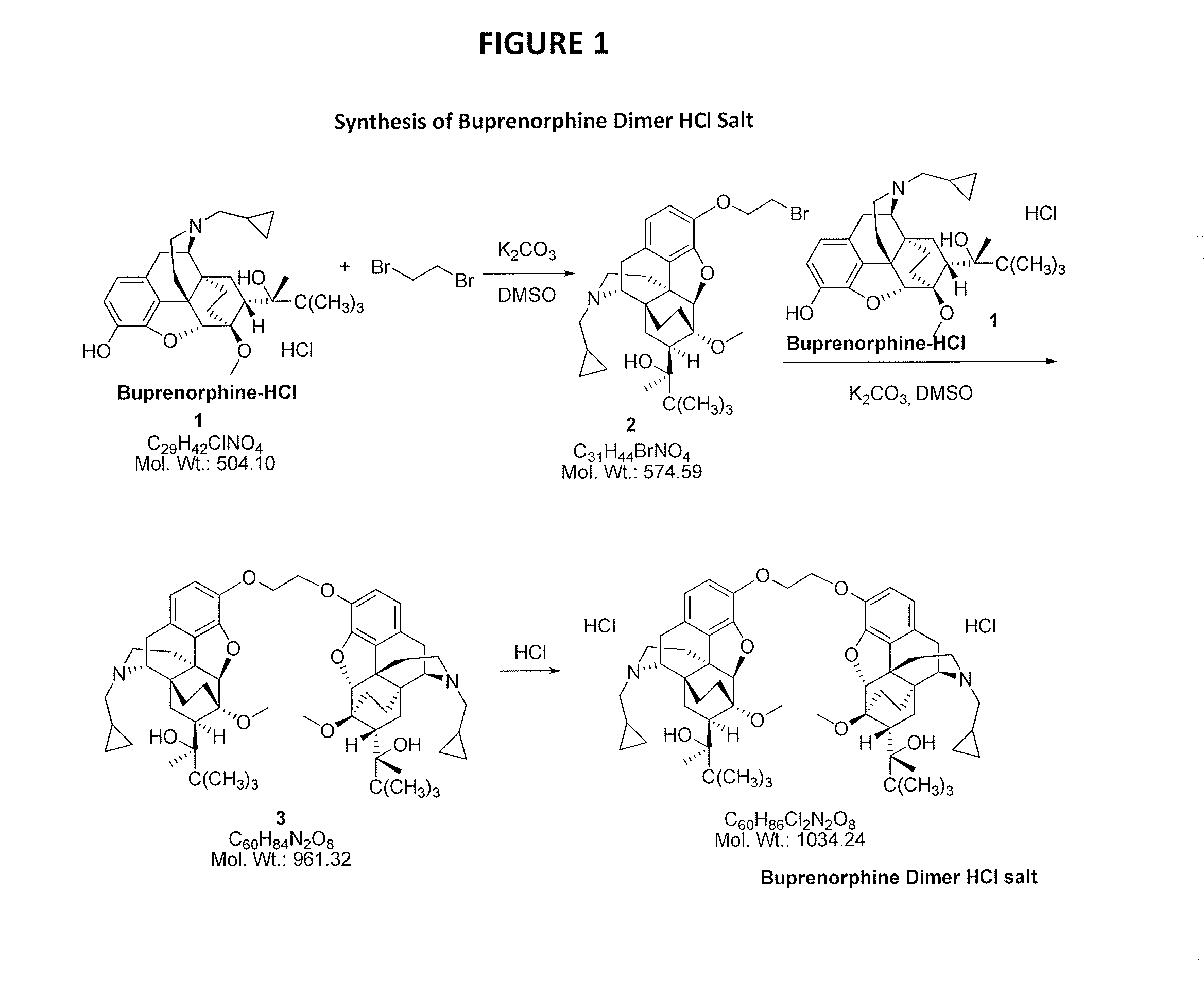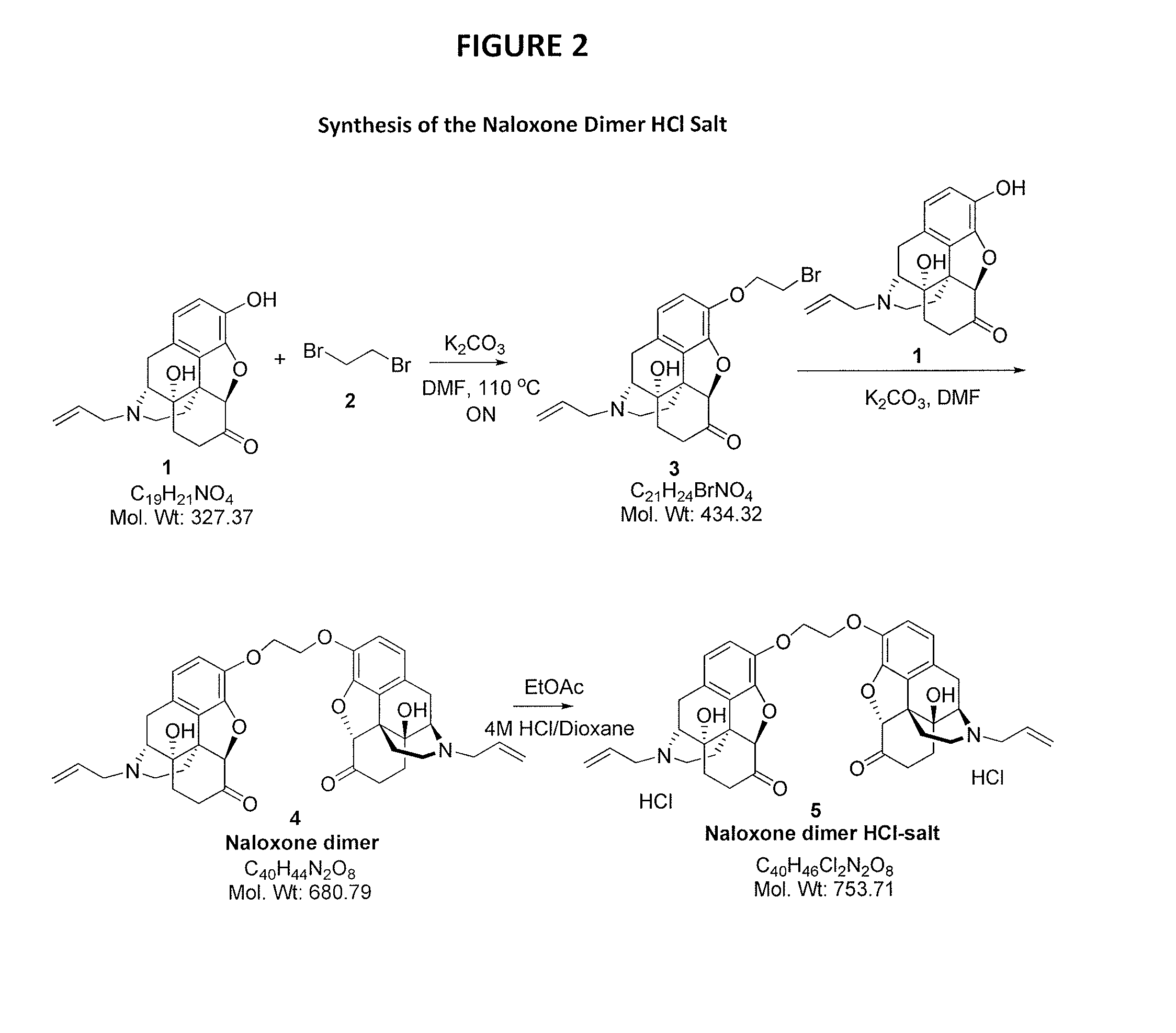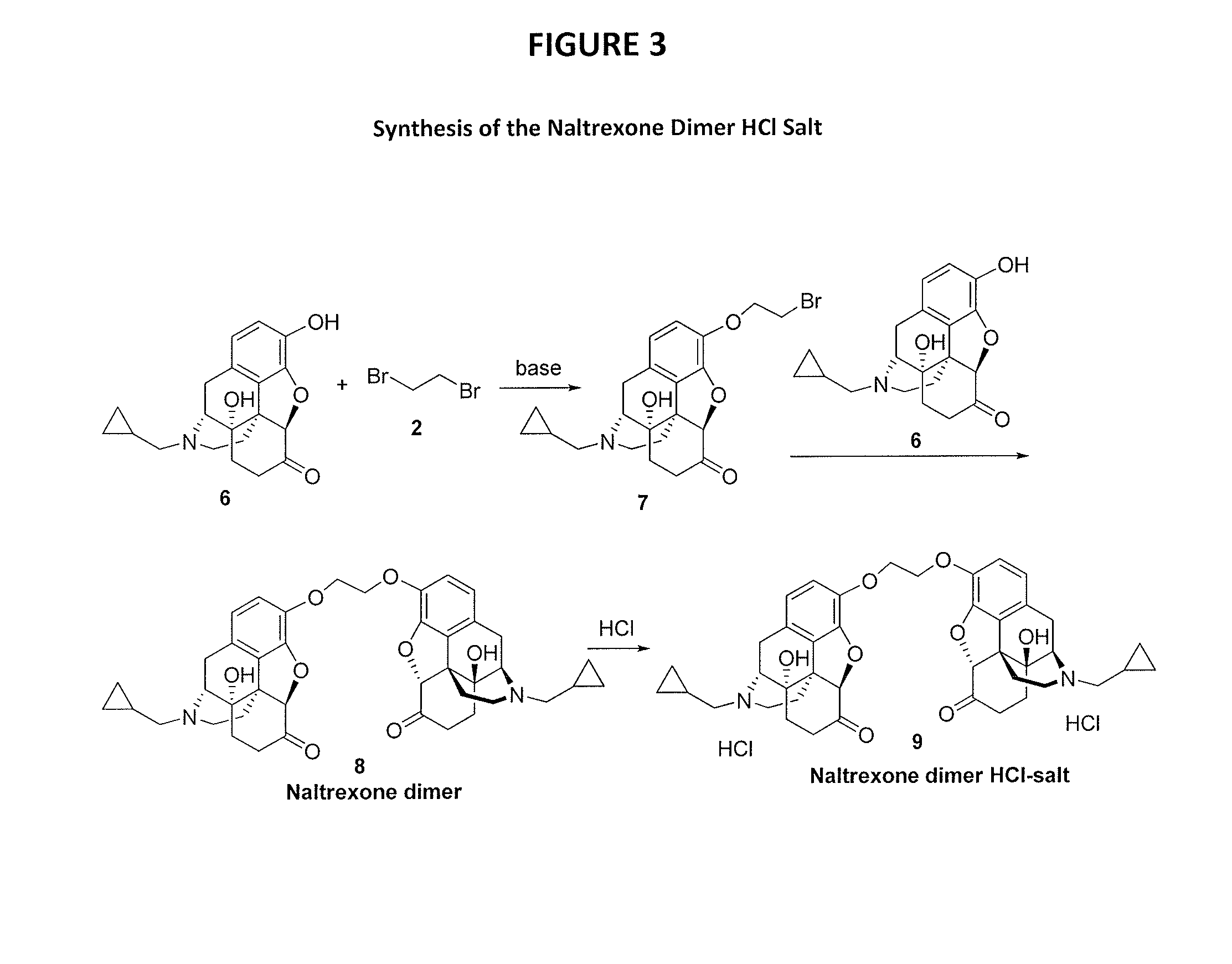Pharmaceutically active dimers linked through phenolic hydroxyl groups
a dimer and dimer technology, applied in the field of semisynthetic opioid derivatives, can solve the problems of pancreatitis, potentially life-threatening disease, and withdrawal symptoms of opioids, and achieve the effects of reducing the gi transit, reducing the gi response, and reducing the risk of death
- Summary
- Abstract
- Description
- Claims
- Application Information
AI Technical Summary
Benefits of technology
Problems solved by technology
Method used
Image
Examples
example 1
Buprenorphine Dimer HCl Salt
[0048]The buprenorphine dimer was synthesized as shown in FIG. 1.
Synthesis of Intermediate 2:
[0049]Buprenorphine HCl-salt (5.0 g, 10.68 mmol, 1 equiv) and potassium carbonate (42.73 mmol, 4 equiv) were charged in a 3-neck round bottom flask followed by anhydrous DMSO (50 ml, 10 vol). The mixture was heated to 60° C. and 1,2-dibromoethane (3.7 mL, 42.72 mmol, 4 equiv) was added slowly. The reaction mixture was stirred at 60° C. for 16 h then cooled to room temperature, diluted with water and extracted with dichloromethane. The organic layer was washed with brine, dried (anh. Na2SO4), filtered and concentrated under reduced pressure to afford a viscous liquid. The crude product was purified by silica gel chromatography using 0-5% MeOH / DCM to afford 4.2 g (69%) intermediate 2 as off-white foamy solid.
Synthesis of Intermediate 3:
[0050]Buprenorphine HCl-salt (1.74 g, 3.72 mmol) and potassium carbonate (2.0 g, 14.87 mmol, 4 equiv) were charged in a 3-neck round...
example 2
In Vitro Assay: Metabolic Stability of Buprenorphine Dimer
[0052]Incubations of the dimer (e.g., 1 μM) with human liver microsomes (e.g., 1 mg protein / mL) were carried out using a Tecan Liquid Handling System (Tecan), or equivalent, at 37±1° C. in 0.2-mL incubation mixtures (final volume) containing potassium phosphate buffer (50 mM, pH 7.4), MgCl2 (3 mM) and EDTA (1 mM, pH 7.4) with and without a cofactor, NADPH-generating system, at the final concentrations indicated in a 96-well plate format. The NADPH-generating system consisted of NADP (1 mM, pH 7.4), glucose-6-phosphate (5 mM, pH 7.4) and glucose-6-phosphate dehydrogenase (1 Unit / mL). The buprenorphine dimer was dissolved in aqueous methanolic solution (methanol 0.5% v / v, or less). Reactions were started typically by addition of the cofactor, and stopped at four designated time points (e.g., up to 120 min) by the addition of an equal volume of stop reagent (e.g., acetonitrile, 0.2 mL containing an internal standard). Zero-time ...
example 3
Stress Stability Assay of the Buprenorphine Dimer
[0058]This study facilitated the understanding of the ease with which a potential abuser could cleave the dimer using household chemicals such as baking soda, acid or simple heating in water. Buprenorphine dimer stability was assessed at room temperature in untreated tap water and in presence of acid (1N HCl) or base (5% aqueous sodium bicarbonate). The dimer was relatively stable under those conditions and under these conditions did not degrade to buprenorphine. See FIG. 8.
[0059]Results:
[0060]As shown in FIG. 8, the buprenorphine dimer remained stable and did not degrade to release buprenorphine either at room temperature or elevated temperature under extreme pH conditions even as long as 30 minutes.
[0061]These studies also facilitate the understanding of the stability of the dimer in the gastrointestinal tract which exhibits a gradient pH along its length in both patients with IBS-D and healthy subjects. The pH ranges from pH 1 due ...
PUM
| Property | Measurement | Unit |
|---|---|---|
| temperature | aaaaa | aaaaa |
| temperature | aaaaa | aaaaa |
| volume | aaaaa | aaaaa |
Abstract
Description
Claims
Application Information
 Login to View More
Login to View More - R&D
- Intellectual Property
- Life Sciences
- Materials
- Tech Scout
- Unparalleled Data Quality
- Higher Quality Content
- 60% Fewer Hallucinations
Browse by: Latest US Patents, China's latest patents, Technical Efficacy Thesaurus, Application Domain, Technology Topic, Popular Technical Reports.
© 2025 PatSnap. All rights reserved.Legal|Privacy policy|Modern Slavery Act Transparency Statement|Sitemap|About US| Contact US: help@patsnap.com



